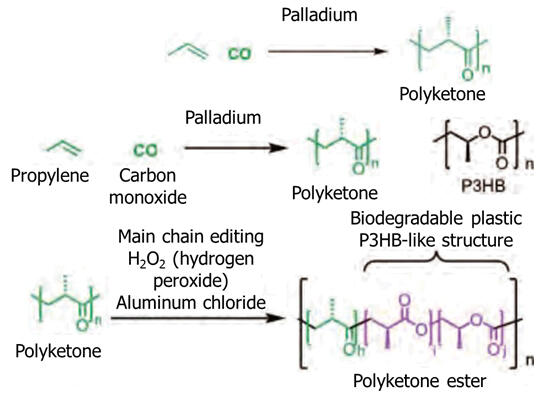Poly-3-hydroxybutyrate (P3HB), known as a biodegradable plastic, is expected to have a low environmental impact due to its rapid conversion to carbon dioxide (CO2) by the action of microorganisms. However, existing synthesis methods for P3HB require fermentation using microorganisms and expensive chemical raw materials, and their problem is to high production costs.
A research group led by Professor Kyoko Nozaki and Project Researcher Kohei Takahashi (currently project lecturer) of the Graduate School of Engineering at the University of Tokyo, employed a strategy called "main chain editing." In this strategy, instead of directly synthesizing the desired polymer, the polymer chain once synthesized is further modified via reactions to significantly change its properties. The research group has found a method to synthesize a polymer with a substructure similar to that of P3HB from propylene, carbon monoxide, and hydrogen peroxide, which are industrial raw materials and abundantly available at a low cost.
First, the research group synthesized polymeric polyketones from the reaction between propylene and carbon monoxide according to existing methods. Then, they performed "main chain editing," in which an oxidation reaction is caused by adding aluminum chloride—which accelerates the reaction—to hydrogen peroxide (the oxidizing agent). The foregoing process resulted in the formation of polyketone esters in which approximately 40% of the total polyketones are converted to polyesters with a structure similar to that of P3HB. When this polymer was fed to microorganisms in soil collected at Gunma University, it was found to be partially converted to CO2, indicating its biodegradability by microorganisms.
In the future, if the efficiency of this oxidation reaction can be further improved to convert polyketones directly to P3HB, it will be possible to produce biodegradable plastics at lower costs and on a larger scale. It is hoped that this research will be a giant step toward solving the problem of environmental pollution caused by waste plastics.





